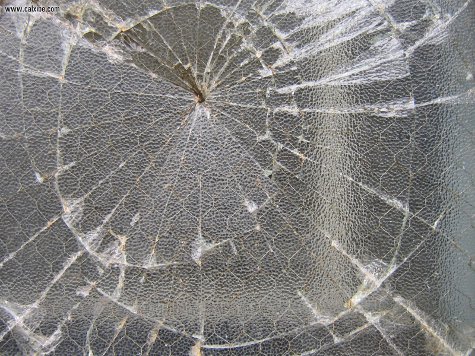Regulation has become our government’s national pastime. In yet another example of how bad policy and regulation drowns out common sense, the U.S. Green Business Council (USGBC) wants to change the government’s environmental design program, with a result that limits the use of shatter-resistant glass in federal buildings.
That’s right; the green standards would restrict the application of bulletproof glass in federal buildings such as courthouses, prisons, and other government institutions.
The bombshell revelation was made in a congressional hearing helmed last week by Rep. Darrell Issa, who was investigating the business burden of excessive government regulation and red tape. Steve Russel of the American Chemistry Council said in his testimony:
Recently proposed LEED updates are so weakly grounded in science that the system would give a credit for avoiding proven US-made products. These products include energy efficient foam insulation and cool vinyl roofing, such as the recently installed vinyl at the DOE headquarters. This credit would also restrict the ability of the federal government to use shatter-resistant, polycarbonate glass, such as this example here, which is essential in protecting buildings such as courthouses, government institutions and prisons from bullets. [Holds up polycarbonate glass shot by bullet] As you can see, a bullet has been shot and remains impregnated within this unshattered glass. Because credits such as these are not adequately justified by science or data, GSA should not recommend LEED for federal buildings if these or similar credits remain. [emphasis added]
If you think that the government must have good reasons for proposing these standards, you would be mistaken. An Oberlin College professor of physics testified in a recent hearing of a House subcommittee that “LEED-certified commercial buildings use about the same amount of primary energy as their conventional counterparts.” Another study suggested that LEED buildings use 25 to 30 percent more energy.
So, what gives? The LEED program is run by fringe environmentalists who hold a skewed world view. The Chair of the LEED program has even said that buildings are “far and away the worst” thing that humans do to the environment. As a result, USGBC proposed standards that “arbitrarily exclude” materials – with the intent to kill the market for products that are effectively used today.
Now, PVC, the world’s third-most-used plastic, is at the top of the USGBC’s hit list. As is timber from nearly three-quarters of American certified forests.
Other products the USGBC recommends avoiding: cool vinyl roofing, which was recently installed on the DOE’s headquarters, and energy efficient foam insulation – products made in the U.S. with proven records of increasing energy efficiency.
LEED restrictions also unfairly damage small American businesses, regulating that building materials comply with European regulations and asking that materials be screened against a tool developed by an environmental NGO, according to testimony by Steve Russell from the American Chemistry Council. For small American businesses, these additional, unproven steps are costly.
Ultimately, the General Services Administration (GSA) has the final call on whether the USGBC’s recommendations will be enacted for federal buildings. But, with over-regulation killing jobs and putting businesses in a tough place, Congress is stepping in to do all it can to delay and block these standards from taking effect.

COMMENTS
Please let us know if you're having issues with commenting.